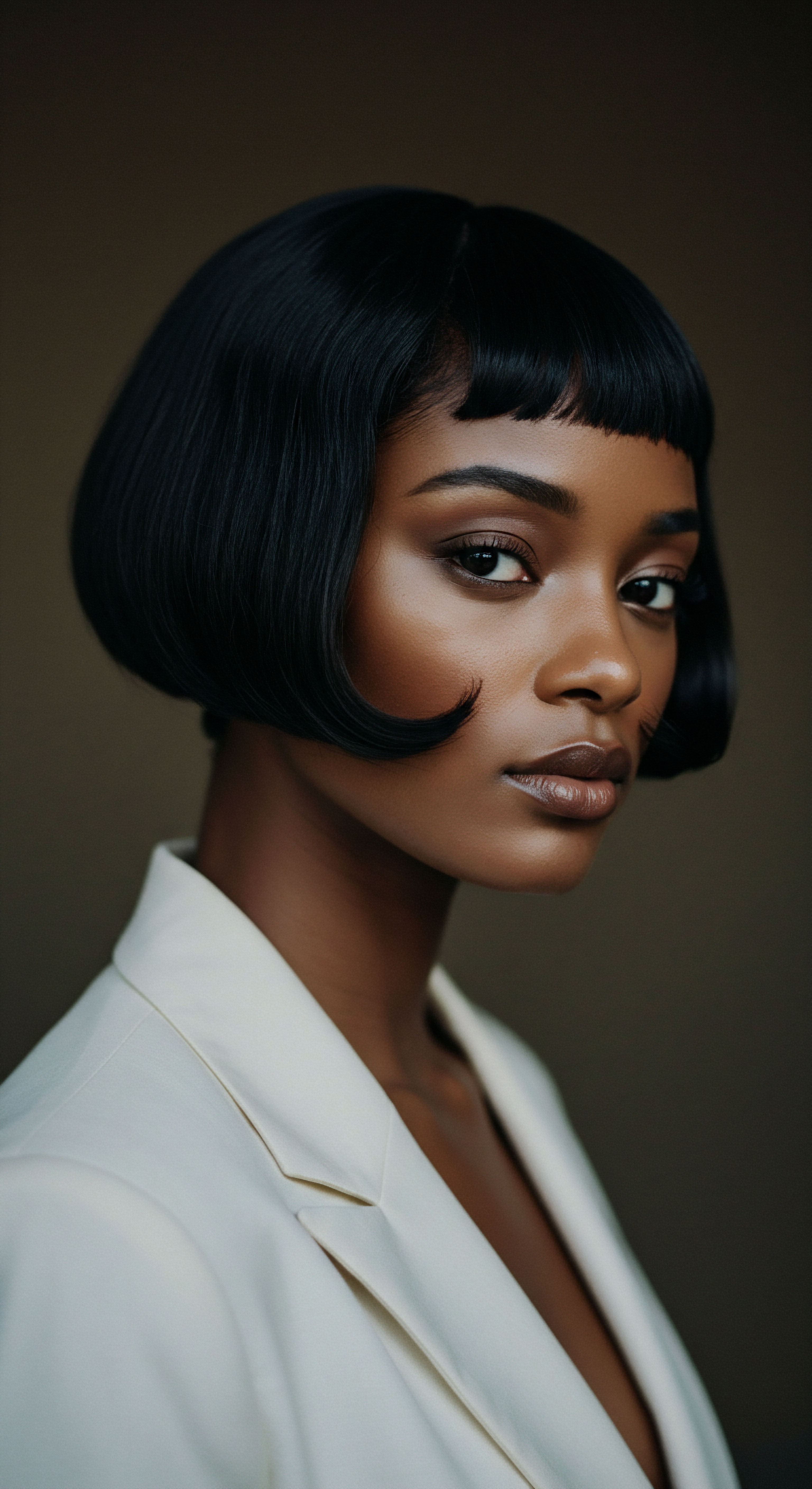
Roots
The quiet rustle of silk against coils, the gentle caress of fabric settling over strands at day’s end – for many, this ritual of donning a bonnet is a familiar comfort, a silent testament to a lineage of care. Yet, beneath this seemingly simple act lies a rich chronicle, a story whispered through generations, woven into the very fabric of Black identity. To truly grasp the enduring presence of the bonnet in Black communities, one must journey back through epochs, observing how necessity, resistance, and self-preservation shaped its place, transforming it from a mere head covering into a cultural touchstone.
Consider the initial arrival of Africans on distant shores, stripped of nearly everything, yet clinging to remnants of self. Hair, an intrinsic part of identity and spirituality in many African cultures, became a vulnerable canvas. The transatlantic crossing itself introduced conditions hostile to delicate strands, demanding practical solutions for preservation amidst unimaginable hardship.
The bonnet’s story within Black communities begins with the profound needs arising from historical displacement and systemic oppression.

Early Enslavement Era Head Coverings
During the era of enslavement, head coverings were not merely a matter of personal preference; they were often mandated. These mandates, however, carried a dual nature. On one hand, they served as a visible marker of subjugation, a symbol of diminished status.
Laws like the Tignon Laws, enacted in Spanish Louisiana in the late 18th century, forced free women of color to cover their hair with a tignon, a scarf or handkerchief, to distinguish them from white women and suppress their perceived attractiveness. This was a deliberate attempt to strip dignity, to visually diminish and control.
Conversely, these imposed coverings were also adapted and subverted. Enslaved individuals, facing harsh labor under relentless sun and exposure to dust and debris, discovered the pragmatic utility of head wraps and cloths. These coverings offered protection for hair that was often neglected due to the demands of their brutal existence.
They shielded strands from environmental damage, kept hair tidy during strenuous tasks, and provided a basic level of hygiene. What began as a tool of oppression slowly began its transformation into a tool of practicality, a silent shield.
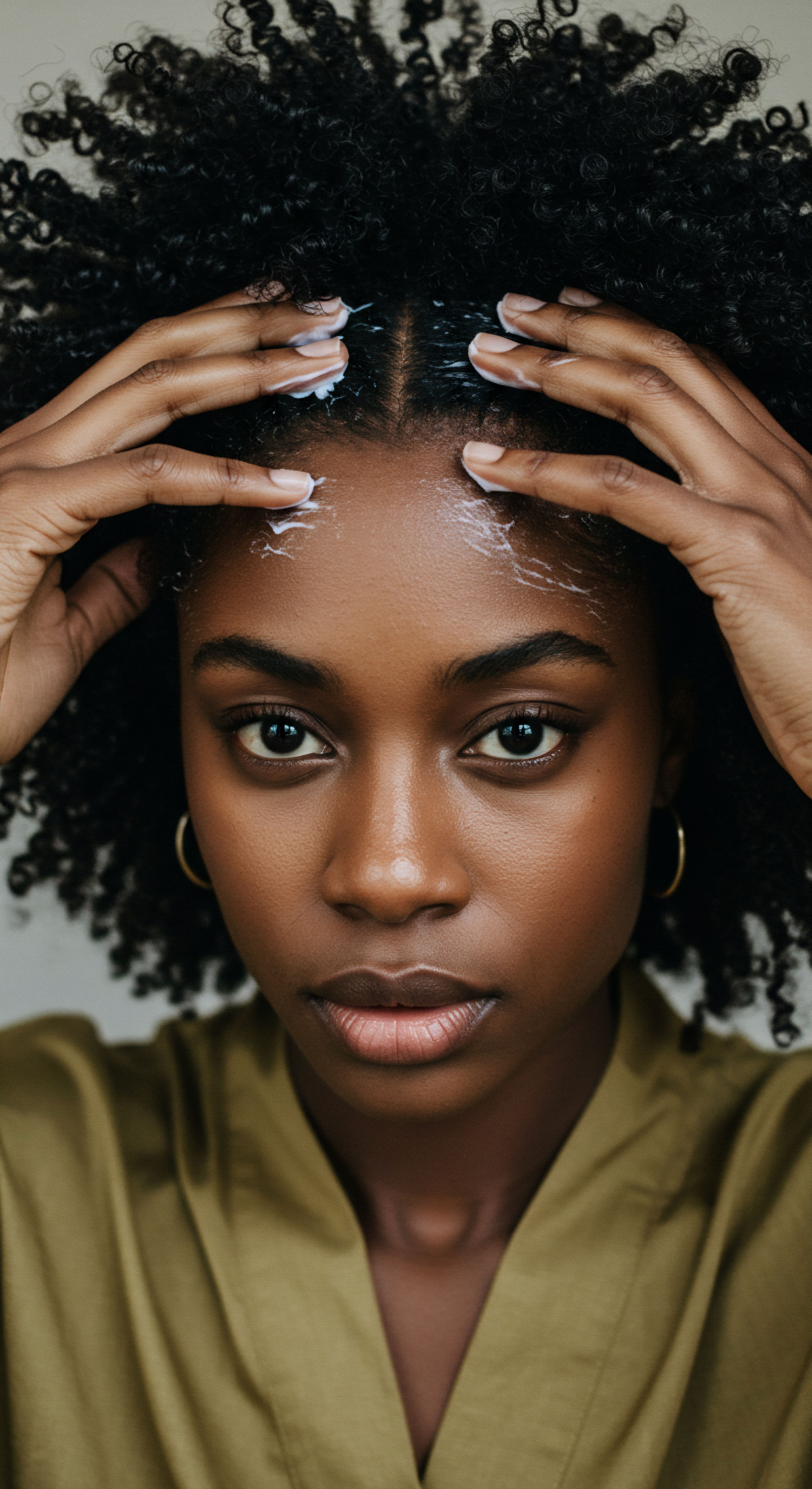
How Did Enslavement Conditions Influence Hair Care?
The realities of enslavement severely limited access to proper hair care tools and products. Water might be scarce, time non-existent, and suitable cleansing agents or moisturizers unheard of. In such circumstances, preserving hair meant finding simple, accessible methods.
Covering the hair with fabric, whether a crude cloth or a more refined remnant, helped to retain natural oils, reduce tangling, and keep hair from drying out in the harsh elements. This rudimentary protection laid a foundational understanding of the importance of safeguarding delicate hair textures, a lesson that would echo through generations.
- Protection from sun and dust became a primary concern for preserving hair health.
- Retention of natural moisture was a quiet benefit of covered hair, minimizing dryness.
- Concealment of hair, sometimes for personal privacy, grew from forced mandates.

Post Emancipation Adaptations
With emancipation came a complex shift. While the legal compulsion to cover hair dissolved, the practical lessons learned from generations of head wrapping persisted. Many Black women continued to wear head coverings, not as a sign of servitude, but as a continuation of sensible hair care practices.
The fabrics might have changed, becoming softer, more decorative, or simply more comfortable, but the underlying purpose remained. This period saw the informal adoption of various head wraps and cloths as part of daily attire, reflecting a blending of practicality and personal style.
The development of bonnets, distinct from simple wraps, gained momentum as commercially produced fabrics and patterns became more accessible. These bonnets, often made from cotton or other breathable materials, offered a more structured, yet still protective, option for daily wear, particularly during sleep or chores. They became a domestic staple, quietly safeguarding hair during hours of rest, a private ritual that stood in contrast to the public display of styled hair.
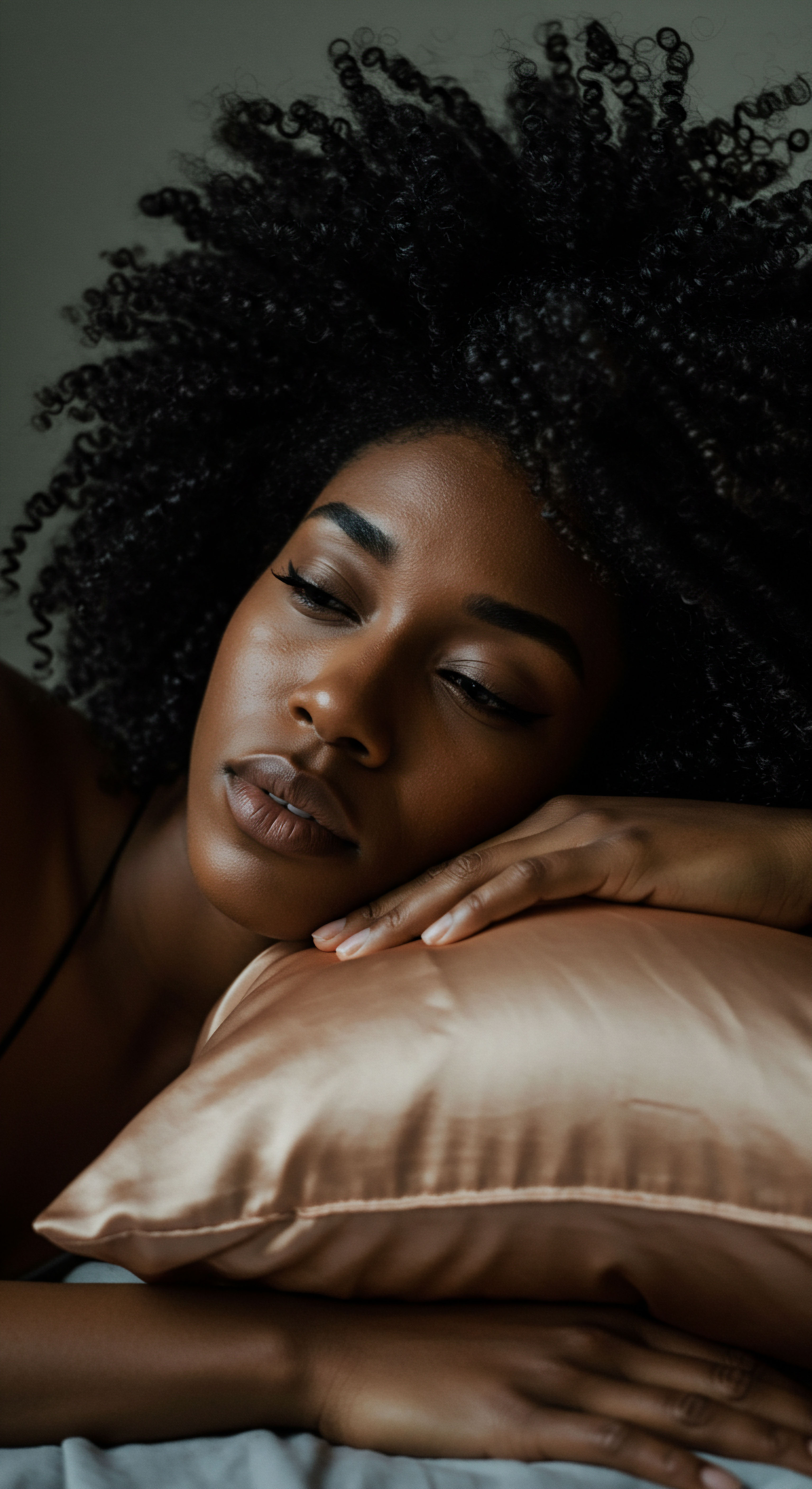
Ritual
The journey of hair care, particularly for textured strands, often unfolds in moments of quiet dedication, a series of practices that nurture and preserve. Stepping into the realm of the bonnet’s continued presence in Black communities means acknowledging this practical wisdom, a knowing passed down through whispers and observations. Here, we delve into the purposeful practices that transformed the bonnet from a historical artifact into an essential tool for daily care, a silent partner in the pursuit of healthy, vibrant hair. It is within these routines that the bonnet’s modern utility truly shines, reflecting a continuity of care and an intimate understanding of textured hair’s unique needs.

Nighttime Sanctuary The Bonnet’s Purpose
The modern use of the bonnet is deeply intertwined with nighttime hair preservation. For textured hair, which tends to be more prone to dryness and tangling than straighter types, sleep can be a period of vulnerability. Tossing and turning on cotton pillowcases can strip moisture, cause friction, and lead to breakage and frizz. The bonnet provides a protective barrier, a gentle cocoon that safeguards strands from these nightly assaults.
Materials like silk and satin are favored for bonnets due to their smooth surfaces. Unlike cotton, which has absorbent fibers that can wick away moisture and create friction, silk and satin allow hair to glide freely, minimizing snagging and breakage. This simple act of covering the hair at night has a profound effect on its long-term health, helping to retain moisture, preserve styles, and reduce the need for extensive restyling each morning. It transforms the bed into a sanctuary for hair, a space where delicate strands can rest undisturbed.
Nightly bonnet wear became a cornerstone of textured hair care, safeguarding strands from friction and moisture loss during sleep.
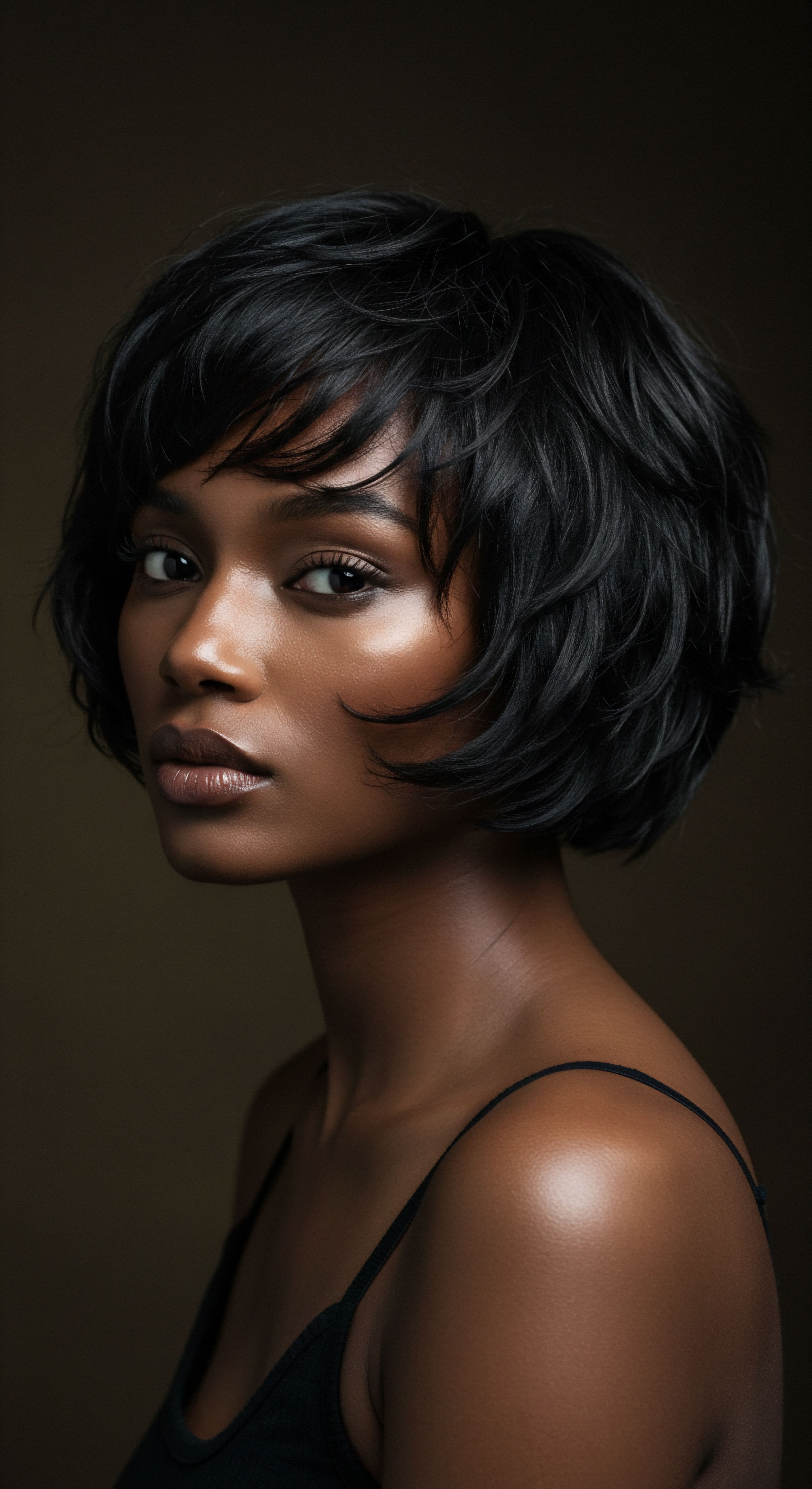
How Does Fabric Choice Impact Hair Health?
The choice of fabric for a bonnet is not merely aesthetic; it directly influences hair health.
- Cotton ❉ Highly absorbent, it can draw moisture from hair, leading to dryness. Its rough fibers create friction, causing frizz and breakage, particularly for delicate textured strands.
- Satin ❉ A smooth, synthetic fabric that reduces friction, allowing hair to glide without snagging. It does not absorb moisture from hair, helping to retain hydration.
- Silk ❉ A natural protein fiber, silk offers similar benefits to satin but is often considered more breathable and luxurious. It also minimizes friction and preserves hair’s natural moisture.
The shift from rudimentary head coverings to specifically designed bonnets, particularly those made from silk or satin, marks a deliberate advancement in hair care practices within Black communities. This evolution reflects a growing scientific understanding of textured hair’s needs and a commitment to preserving its health and integrity. It is a testament to adaptive knowledge, where practical solutions are refined over time.
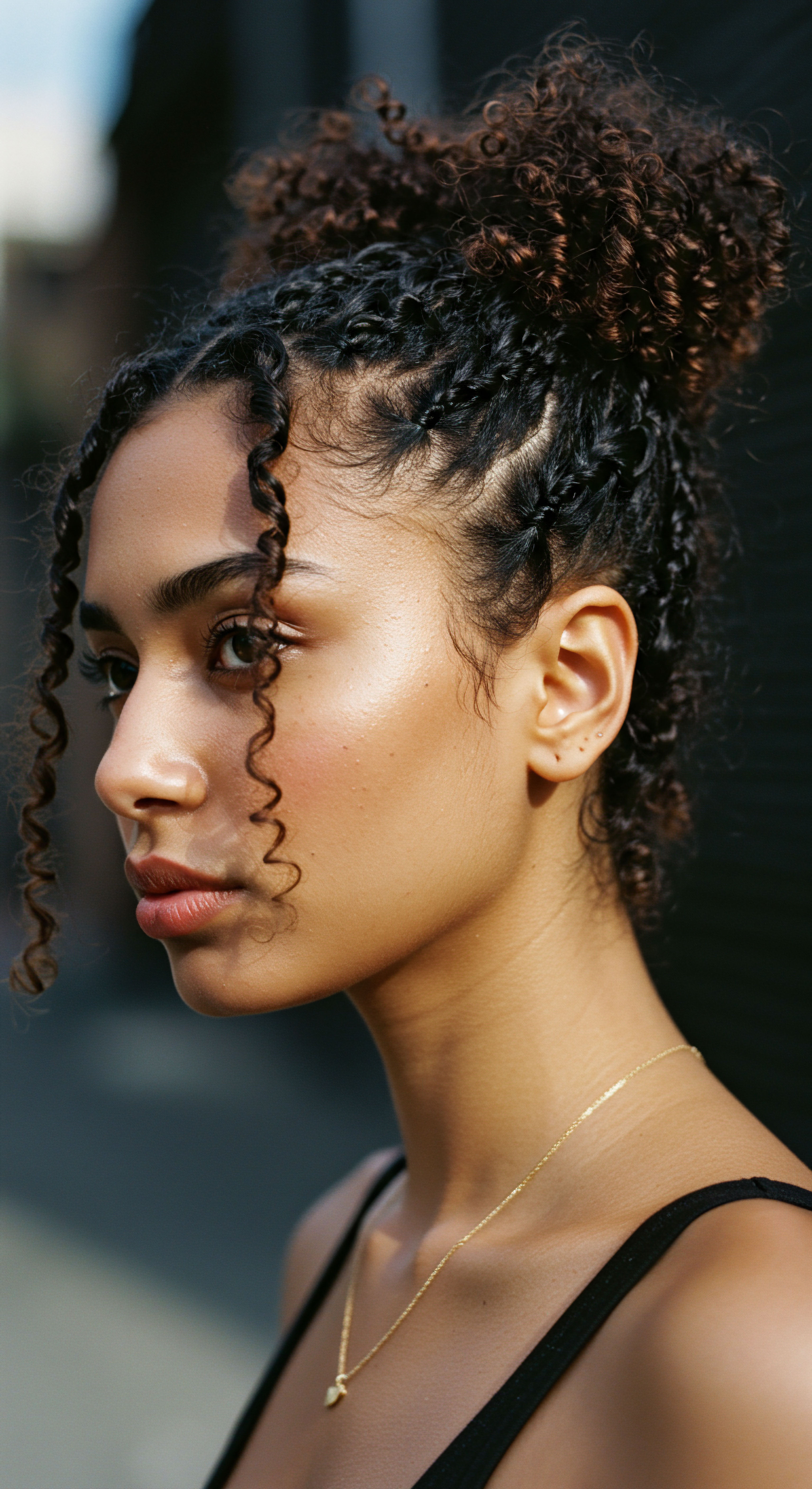
Beyond Sleep Styling Preservation
While nighttime protection remains a primary function, bonnets also serve a daytime purpose, particularly in preserving styles. After hours spent meticulously creating braids, twists, or a defined wash-and-go, covering the hair with a bonnet when running errands, cleaning, or simply relaxing at home helps to maintain the style’s integrity. This prevents premature frizz, protects from environmental elements, and extends the life of a hairstyle, reducing the frequency of manipulation.
For many, the bonnet becomes a practical accessory for those moments when hair is not meant to be on public display but still requires protection. It allows for effortless transitions between public presentation and private preservation, ensuring that styled hair remains pristine for its intended reveal. This duality of purpose – a protector during rest and a preserver during activity – solidifies the bonnet’s place as a versatile tool in the textured hair care regimen.
| Historical Period Enslavement Era |
| Common Materials Coarse cloths, scraps |
| Primary Function Protection from elements, forced marker of status |
| Historical Period Post-Emancipation |
| Common Materials Cotton, varied fabrics |
| Primary Function Daily wear, practical hair preservation |
| Historical Period Modern Era |
| Common Materials Silk, satin, soft synthetics |
| Primary Function Nighttime protection, style preservation, moisture retention |
| Historical Period Materials for hair coverings have evolved to meet changing needs and knowledge. |

Relay
To truly comprehend the bonnet’s enduring significance within Black communities requires more than a casual glance; it calls for a deep exploration into the intertwined narratives of resilience, cultural affirmation, and economic realities. The bonnet is not merely a piece of fabric; it is a repository of historical memory, a quiet statement of self-care against a backdrop of systemic challenges, and a living testament to a community’s ability to adapt and redefine symbols. Its story extends beyond personal hair care, reaching into the broader societal structures that have long dictated perceptions of Black beauty and professionalism.
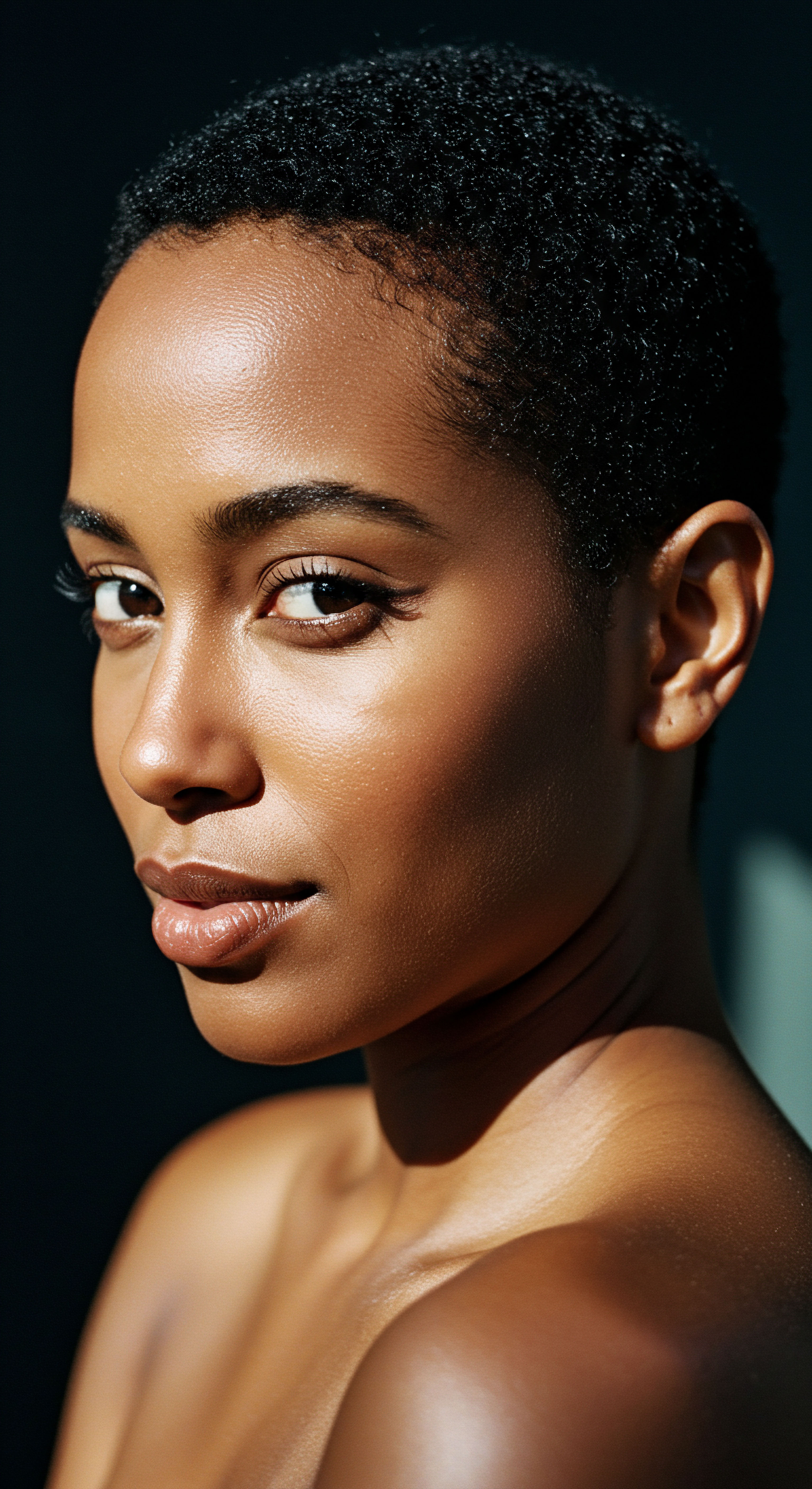
Can Hair Discrimination Shape Bonnet Use?
The historical and ongoing realities of hair discrimination have profoundly shaped hair practices, including the use of bonnets. For centuries, Black hair textures have been deemed “unprofessional,” “unruly,” or “unpolished” in mainstream society, leading to significant pressures to conform to Eurocentric beauty standards. This often meant chemically straightening hair or adopting styles that minimized its natural texture, processes that can be damaging and time-consuming.
In response to this societal pressure, bonnets and other protective coverings served a dual role. They offered a private space for hair to recover and thrive away from scrutinizing gazes. They also provided a means of preserving intricate protective styles, such as braids or twists, which, while culturally affirming, were sometimes met with prejudice in educational or professional settings. The bonnet, therefore, became a silent act of defiance and self-preservation, allowing individuals to maintain their hair health and cultural identity in a world that often sought to diminish both.
The bonnet serves as both a private refuge for hair health and a quiet symbol of cultural affirmation in the face of societal prejudice.
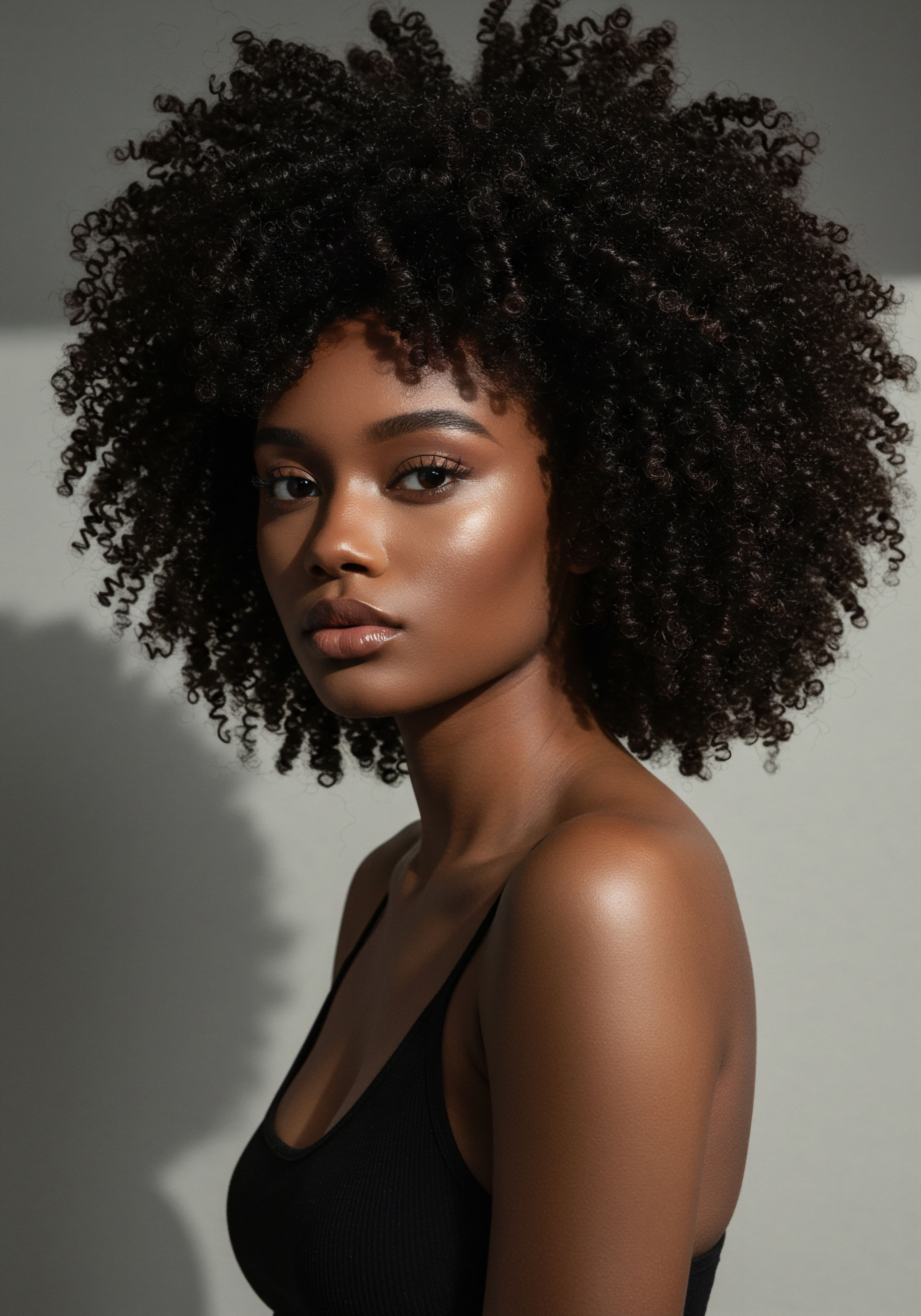
The CROWN Act and Its Cultural Context
The passage of legislation like the CROWN Act (Creating a Respectful and Open World for Natural Hair) across various states in the United States underscores the pervasive nature of hair discrimination. This act prohibits discrimination based on hair texture or protective hairstyles, acknowledging that such biases disproportionately affect Black individuals. The very necessity of such laws reveals the systemic nature of the issue, where natural hair can lead to job loss, school suspension, or social exclusion.
This legal recognition of hair discrimination highlights the deeper societal forces that make tools like the bonnet so essential. If natural hair is often deemed unacceptable in public spaces, then the bonnet offers a way to protect and maintain those styles in private, allowing individuals to choose when and how they present their hair to the world. It is a practical response to an unfair reality, a way to navigate systemic biases while preserving personal well-being.

Bonnets as Economic Resistance
The Black hair care industry represents a powerful economic force, a testament to the community’s self-reliance and entrepreneurial spirit. For generations, Black individuals have innovated and invested in products and practices tailored to textured hair, often filling a void left by mainstream markets. The bonnet, as a fundamental tool in this ecosystem, plays a subtle yet significant economic role.
Consider the broader implications of hair health and maintenance. When bonnets extend the life of protective styles, they reduce the frequency and cost associated with salon visits or purchasing new styling products. This contributes to a more sustainable approach to hair care, allowing individuals to save resources and invest them elsewhere. In a historical context where economic disenfranchisement was common, every measure that contributed to financial prudence held greater weight.
A compelling perspective on the economic dimension of Black hair care, though not specifically about bonnets, can be drawn from the historical spending patterns within the community. For instance, data from a 2018 Nielsen report indicated that Black consumers spent nine times more on ethnic hair and beauty products than non-Black consumers. While this statistic primarily points to product consumption, it implicitly speaks to the significant investment in hair care, which includes protective measures like bonnets to preserve these investments.
The bonnet, by extending the life of styles and reducing the need for frequent re-styling or repair from damage, indirectly supports the economic autonomy of Black consumers by making their hair care investments go further. This often-overlooked economic prudence, rooted in historical necessity, quietly underpins the bonnet’s practical value within a community that has historically navigated economic limitations.
| Aspect Identity Affirmation |
| Historical Context Subtle reclamation of self amidst oppression |
| Contemporary Relevance Expression of cultural pride and self-acceptance |
| Aspect Hair Health |
| Historical Context Protection from harsh conditions, lack of resources |
| Contemporary Relevance Prevention of damage, moisture retention, style longevity |
| Aspect Economic Prudence |
| Historical Context Resourcefulness in scarcity, DIY hair care |
| Contemporary Relevance Cost savings, sustainable hair care practices |
| Aspect The bonnet embodies a rich interplay of historical memory and modern utility. |

Reflection
The bonnet, in its humble simplicity, carries a profound story. It is a quiet sentinel, witnessing centuries of struggle and triumph, adapting its form and purpose while remaining steadfast in its commitment to care. From the mandates of subjugation to the quiet defiance of self-preservation, and now to the deliberate choice of nurturing textured strands, its presence speaks volumes about resilience, ingenuity, and the enduring power of cultural practices. It reminds us that even the simplest objects can hold deep historical memory, silently shaping the rituals that nourish both hair and spirit.
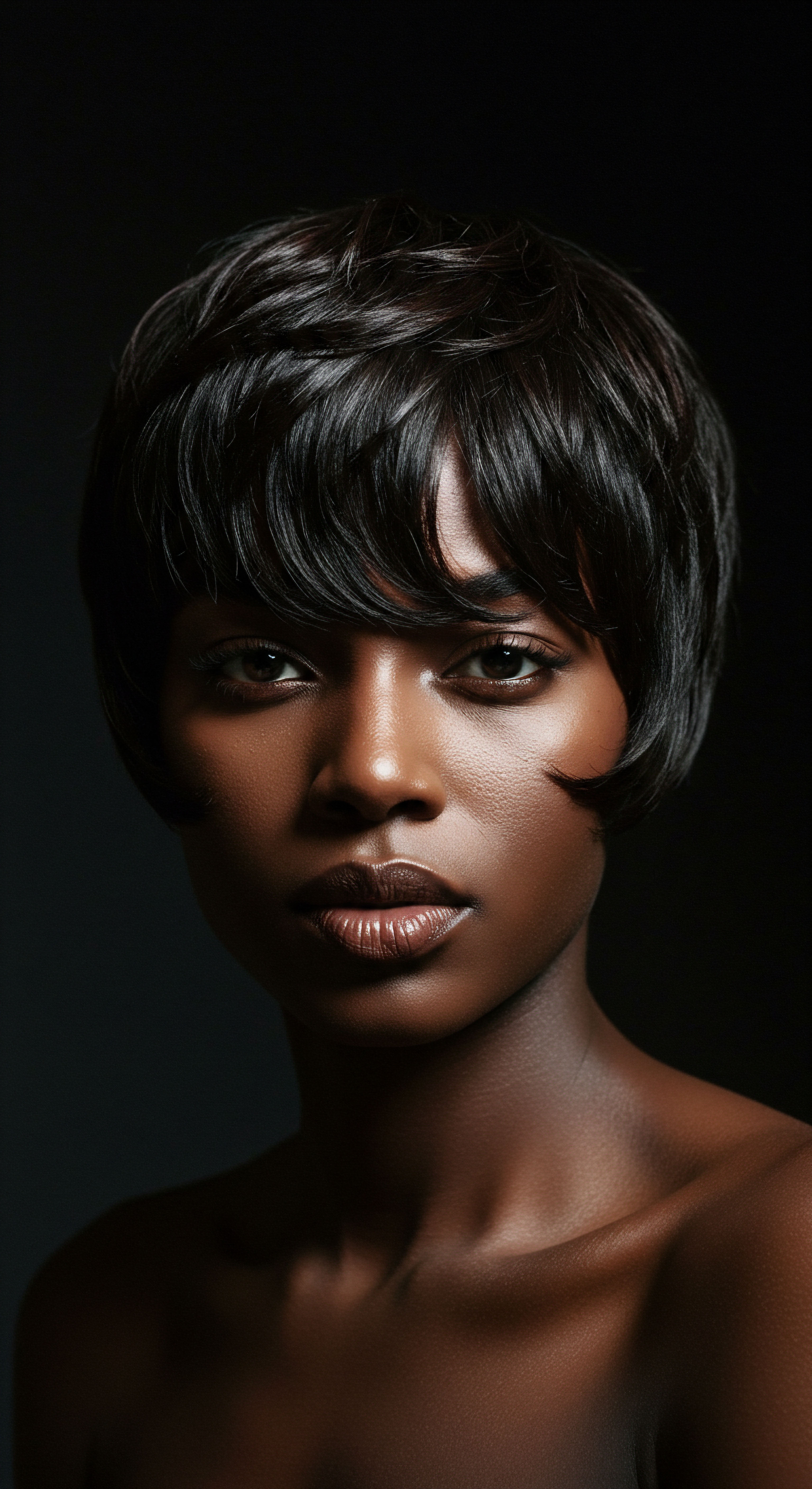
References
- 1. Nielsen. (2018). Black Consumers ❉ The Untapped Market. NielsenIQ.
- 2. Byrd, A. D. & Tharps, L. (2001). Hair Story ❉ Untangling the Roots of Black Hair in America. St. Martin’s Press.
- 3. White, S. (2005). Stylin’ ❉ African American Expressive Culture from Its Beginnings to the Zoot Suit. Cornell University Press.
- 4. Mercer, K. (1994). Welcome to the Jungle ❉ New Positions in Cultural Politics. Routledge.
- 5. Hooks, B. (1992). Black Looks ❉ Race and Representation. South End Press.
- 6. Banks, I. (2000). Hair Matters ❉ Beauty, Power, and the Politics of Hair in African American Culture. New York University Press.
- 7. Akbari, N. (2019). The CROWN Act ❉ A Legal and Social Examination of Hair Discrimination. Harvard Law Review.
- 8. Rooks, N. M. (1996). Hair Raising ❉ Beauty, Culture, and African American Women. Rutgers University Press.